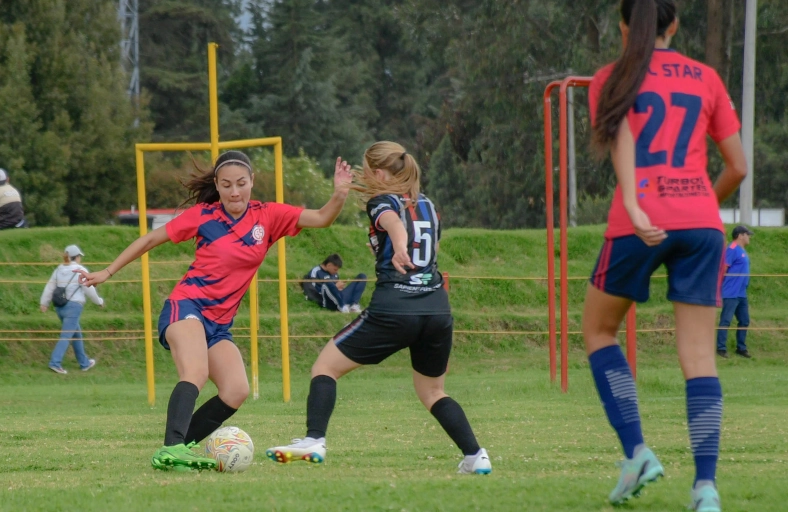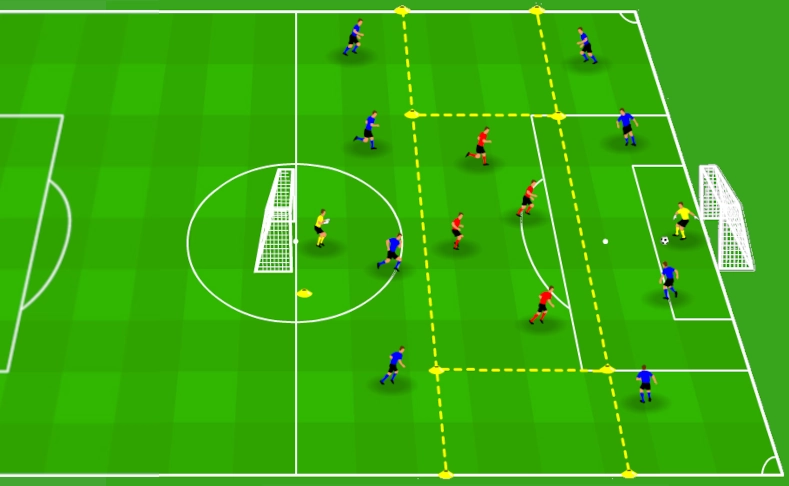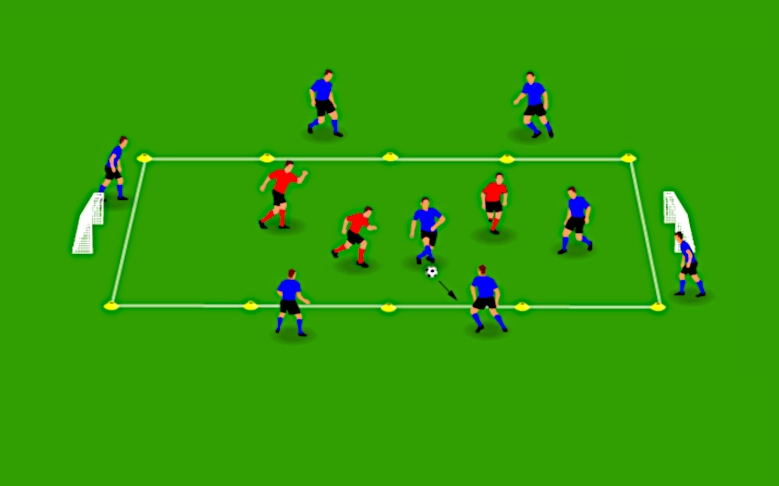Fun Passing Drill for Football: The Box

Training should feel enjoyable and challenging, and a good passing drill brings both qualities together. “The Box” is a simple game that keeps players moving, encourages smart decision-making, and forces teams to keep possession under pressure. It works particularly well for adult amateur squads, where attendance varies and quick, meaningful activities matter.
This drill teaches players how to recycle the ball, progress through a structured build-up phase, and earn the right to attack only after demonstrating composure and teamwork.
Setup
Use any pitch you have available—either a real half-pitch or a small-sided area marked with cones. Divide the space into two halves using the halfway line (or a line of cones).
Place a small goal at each end and create a no-entry zone immediately in front of each goal. No player from either team may step inside this area at any time.
- Ideal format: 5v5
- Minimum format: 2v2
- Larger groups can rotate players in seamlessly.
Equipment Needed
- Cones (for pitch boundary + halfway line)
- 2 small goals
- 1 football
- Training bibs
Objective
The drill has two clear aims:
- Build-Up Phase: Maintain possession in your own half under pressure and complete a required number of passes.
- Final Phase: Once eligible, attack freely and finish on goal while still keeping good rhythm and discipline.
Throughout both phases, players are restricted to a maximum of three touches. This keeps the ball flowing and forces participants to think quickly.
Rules and Instructions
The session begins with both teams set up in their halves.
1. Build-Up Phase (Passes in Own Half)
- The team in possession must complete 5 consecutive passes inside their own half.
- This encourages recycling the ball, supporting play, and restructuring after turnovers.
- If the defending team touches the ball but does not keep it, the pass count continues.
- The pass count resets only when the defending team establishes possession and completes their first pass.
Once the 5 passes are completed, the team progresses to the Final Phase.
2. Final Phase (Scoring Permission)
- After reaching 10 total passes, the attacking team is now allowed to shoot.
- These ten passes include the five from the build-up phase.
- Once the team is eligible, they may shoot any time until they lose possession.
- Passes in this phase may occur anywhere on the pitch.
3. Touch Restriction
Across the entire drill:
- Players are allowed a maximum of 3 touches
(control → adjust → pass)
This rule forces cleaner technique, better movement off the ball, and faster decision-making.
4. No-Entry Zone Rule
To prevent goal-camping and maintain fairness:
- A restricted zone around each small goal is always active.
- No player may stand inside or step into this area.
- Goals must be scored from outside the zone.
This keeps the game more realistic and encourages proper positioning.
Variations
Once your players master the core version, try:
- Mandatory one-touch finishing in the Final Phase
- Adding a neutral pivot player in the build-up half
- Switching the direction of play every few minutes
- Introducing two footballs to increase tempo
- Reducing space for a higher-intensity challenge
Coaching Tips
- Encourage players to spread out in possession but stay connected enough to recycle quickly.
- Emphasize first-touch direction, especially when tight on space.
- Reinforce the idea that build-up is not optional—players must earn the right to attack.
- Highlight scanning and anticipation: players should know their next action before receiving.
- Praise teams that reset and recycle instead of forcing risky forward passes.
Why This Drill Works
Adult teams often face limited space and inconsistent numbers mid-season. This drill adapts perfectly:
- Works with 10–12 players
- No waiting in long lines
- Constant involvement for everyone
- Mixes fun with tactical discipline
- Encourages teamwork over individualism
It reinforces habits that matter on match day: controlled build-up, composure under pressure, and coordinated attacking.
Takeaways
- Structured possession: Players must learn to circulate the ball to progress.
- Discipline under pressure: The 3-touch rule keeps play sharp and focused.
- Clear objectives: Teams understand exactly what earns them the right to attack.
- Realistic transitions: Resetting on turnovers teaches match-like decision-making.
- Attacking creativity: Once in the Final Phase, players can combine freely to create chances.
Enjoy this drill? Follow us on social media or join our newsletter for more training ideas, weekly coaching tips, and new drills for your sessions.



